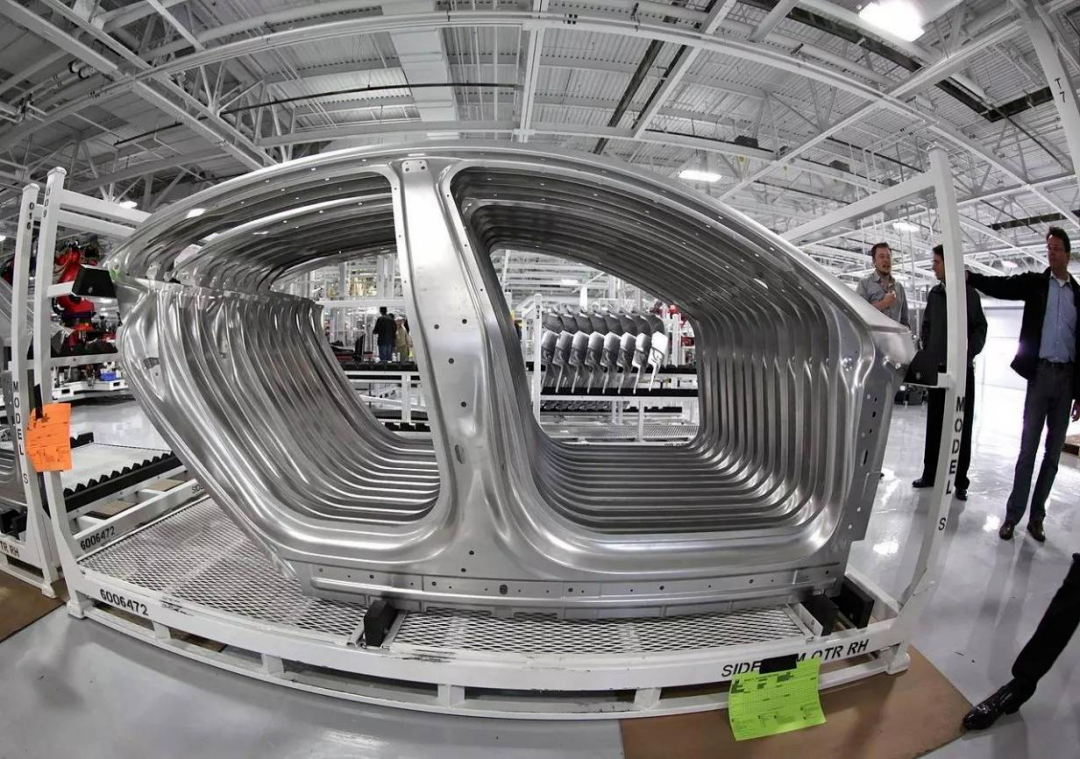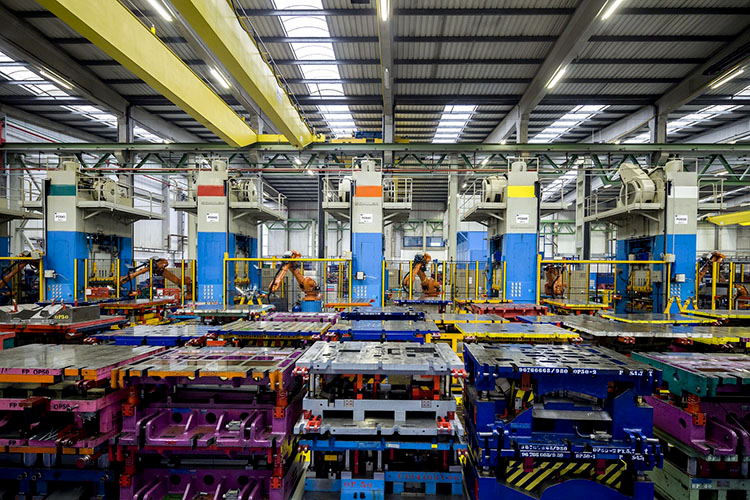technological innovation
Five Hot Stamping Forming Techniques with New Processes and New Materials
With the continuous increase in user demands for vehicle safety, the safety of automobiles is rapidly improving and becoming a primary consideration for users when choosing a vehicle model. In addition to active safety features that can prevent accidents, automotive companies are also increasingly focusing on the development of passive safety features within the vehicles themselves. The vehicle body, as the last line of defense to protect passengers, has seen advancements in related technologies.At the same time, reducing vehicle body weight to achieve energy-saving and emission reduction goals has become a significant focus for mainstream automakers and suppliers. To adapt to this development trend, major companies have developed high-strength steel materials for use in vehicle body components, but this has also presented challenges in forming high-strength steel at room temperature.As a result, hot forming technology has emerged as a solution to address these challenges.
In the early stages, hot forming technology was mainly developed for high-strength steel sheets. The process involves heating boron-alloyed steel sheets with a room-temperature strength of 500 to 600 MPa to a temperature range of 850 to 950°C, ensuring uniform austenitization. The heated sheets are then stamped into shape using molds equipped with internal cooling systems. After the forming process, rapid cooling transforms the austenite into martensite, resulting in hardened stamped parts with significantly improved strength, thus achieving enhanced vehicle safety. The use of high-strength steel has made vehicle bodies more robust and safer. Additionally, hot-formed steel offers a higher cost-effectiveness compared to other materials, leading to its increased adoption in recent years, turning hot forming technology into a cutting-edge solution applied to vehicle bodies.
For automotive body designers and developers, achieving vehicle lightweighting while ensuring safety performance remains a constant challenge. With the improvement of design capabilities and advances in functional requirements, new hot forming processes, materials, and designs have emerged to cater to various functional needs in different parts of the vehicle body. Here, we list five mainstream hot stamping forming technologies that integrate new processes, materials, and designs to meet current demands.

Integrated Body Stamping
Short Process Hot Rolled Hot Forming Steel
From the perspective of sustainable development, the decarbonization of the automotive industry cannot solely rely on energy-saving and emission reduction during the vehicle's service process. It also requires low-carbon practices throughout the entire lifecycle, from design, manufacturing, usage, to recycling and reuse. Short process rolling technology, which has the advantage of low energy consumption, is gradually gaining attention from automotive engineers.
The thin slab continuous casting and rolling process in comparison to conventional hot rolling reduces energy consumption by more than 50%. This fast solidification and direct rolling process of thin slab continuous casting and rolling are particularly suitable for developing thin gauge hot-rolled high-strength steel products.
It is understood that mainstream domestic steel mills have developed CSP (compact strip production) short process hot-formed steel with performance almost identical to existing hot-formed steel, and they can be used in the same applications as conventional hot-formed steel. One significant feature of such materials is the reduction of energy consumption in the raw material production process, which aligns with the future direction of sustainable development. Lingyun Corporation has already achieved hot forming projects for FAW Audi Q5, FAW Volkswagen CC, and X55. They have successfully supplied non-uniform thickness hot-formed products to Volkswagen models and secured designations for 20 different parts in 14 hot-formed products for BYD (Build Your Dreams).
Variable Cross-Section Hot Forming Technology
Variable Cross-Section Hot Forming Technology refers to the process of using a sheet with varying thickness for hot stamping. The hot stamping process is identical to traditional hot forming. This type of sheet with varying thickness allows for the design of a smooth transition in the thickness of the strip according to the changing stress characteristics of the parts. By customizing the product while ensuring performance, it achieves structural weight reduction. In 2006, Dodge Caliber and BMW X5 became the first cars to adopt customized rolling and hot-stamped hardened components in their body structure.
Segmented Reinforcement Hot Forming Technology
European renowned car body supplier, Heestamp, has conducted extensive research in this technology and has recently obtained relevant patent technology. Based on the traditional multi-station stamping, Heestamp has integrated different steps of molds into a single station, allowing for continuous hot forming, representing a revolutionary development in mold press technology. Due to material strength considerations, Heestamp combines the continuous stamping of cold stamping with the technology of hot stamping to achieve the hot stamping technology while maintaining the efficiency of traditional cold stamping.
Furthermore, in terms of materials, Heestamp now utilizes a combination of multiple materials. For example, aluminum and carbon fiber applications are used to meet both traditional safety requirements and the demand for lightweight design. In the field of hot stamping technology, Heestamp has continuously innovated in the technology of integral door rings over the years.

Intelligent Workshop
Laser Joining and Hot Forming Technology
In 2019, the Acura RDX vehicle model applied the hot stamping and laser welding technology to the inner and outer front door ring system for the first time, deeply imprinting the laser joining and hot forming technology in the minds of domestic automotive material engineers. In fact, as early as 2014, the Acura MDX model showcased the laser welding of the outer door ring.
Laser joining and hot forming technology refers to the process of using laser energy to weld and join different materials, plate thicknesses, and coatings to form a unified sheet, which is then subjected to hot stamping as a whole. The introduction of the joining technology addresses the issues related to ultra-wide sheets and varying process performance requirements in different parts, playing an important role in reducing vehicle weight, lowering overall vehicle costs, and contributing to energy-saving and environmental protection. Currently, the major suppliers of laser joined and hot-formed steel materials include ArcelorMittal, ThyssenKrupp Steel, Nippon Steel Corporation, and Baosteel Group.
High Strength Aluminum Alloy Hot Forming Technology
Although the position of steel as the main material for automotive bodies is difficult to challenge in the short term due to the requirements for body strength, the price of lightweight materials, and the level of processing technology, the automotive body remains an area with enormous potential for lightweighting. By using aluminum alloys, a weight reduction of about 40% can be achieved, and many companies are continuously pushing the boundaries in the field of high-strength aluminum alloy hot forming.
The revolutionary high-strength aluminum alloy hot forming + quenching technology (HFQ patent) was developed by the UK company Impression Technology. It was introduced to China by Changchun Jiwen and a large-scale mass production line has been established in China. This technology is a lightweight manufacturing technology for aluminum alloy hot stamping with low cost, high efficiency, low investment, and high performance. It achieves lightweighting by integrating stamped parts and using high-strength aluminum alloys to reduce component thickness. Due to the reduction in the number of molds and components required for design and manufacturing, it also reduces the total investment cost. The technology can achieve a weight reduction of 20%-40% for components. Additionally, the stamped parts formed with this technology have no springback, and the design of both the stamped parts and the molds does not require consideration of springback compensation. This significantly shortens the development cycle, enhances the repeatability and controllability of high-level product dimensions, and greatly improves the design flexibility of the engineering team.

High Strength Aluminum Alloy Body
The application of new processes and new materials is creating new markets for hot forming.
With the continuous increase in China's automobile production, the requirements for lightweighting, energy-saving, and emission reduction, as well as increasingly stringent automotive safety regulations, have provided vast market opportunities for hot-formed steels. Compared to lightweight materials such as magnesium alloys and carbon fibers, hot-formed steels have relatively lower life-cycle emissions, which not only results in lower emissions during the manufacturing stage but also maintains a relatively competitive emission reduction ability during the vehicle's usage stage. This is beneficial in achieving the energy-saving goals for the entire lifecycle of the automobile.
The development of intelligent vehicles, while reducing traditional passive and active collision issues to some extent, also introduces new risks related to network and information security in the field of intelligent vehicles. Therefore, in the event of a safety accident, passengers may face potentially more severe risks.
Thus, passive structural safety will remain the fundamental design requirement for automobiles, and the use of high-strength automotive steel to enhance safety performance will still be necessary. Many domestic and foreign companies have showcased innovative solutions in hot forming, each with their unique application ideas, from design to production.
RELATED NEWS
- Not sure about the T4, T5, and T6 materials of aluminum profiles? This article h 2024-03-20
- How to use aluminum profile section design skills to solve extrusion production 2024-03-19
- Factors affecting the life of trimming and punching molds 2024-03-12
- Overview of Steel/Aluminum Welding Technology 2024-02-29
- Steel belt conveying direction 2023-09-26
CATEGORIES
LATEST NEWS
CONTACT US
Contact: Manager:Miss Jasmien
Phone: +8618825429836
E-mail: info@gdaa-cn.com
Whatsapp:+8618825429836
Add: Headquarter:No.8,Yixian Road,GDAA Mansion,Guangfo Zhicheng, Dali Town,Foshan,Guangdong.China
